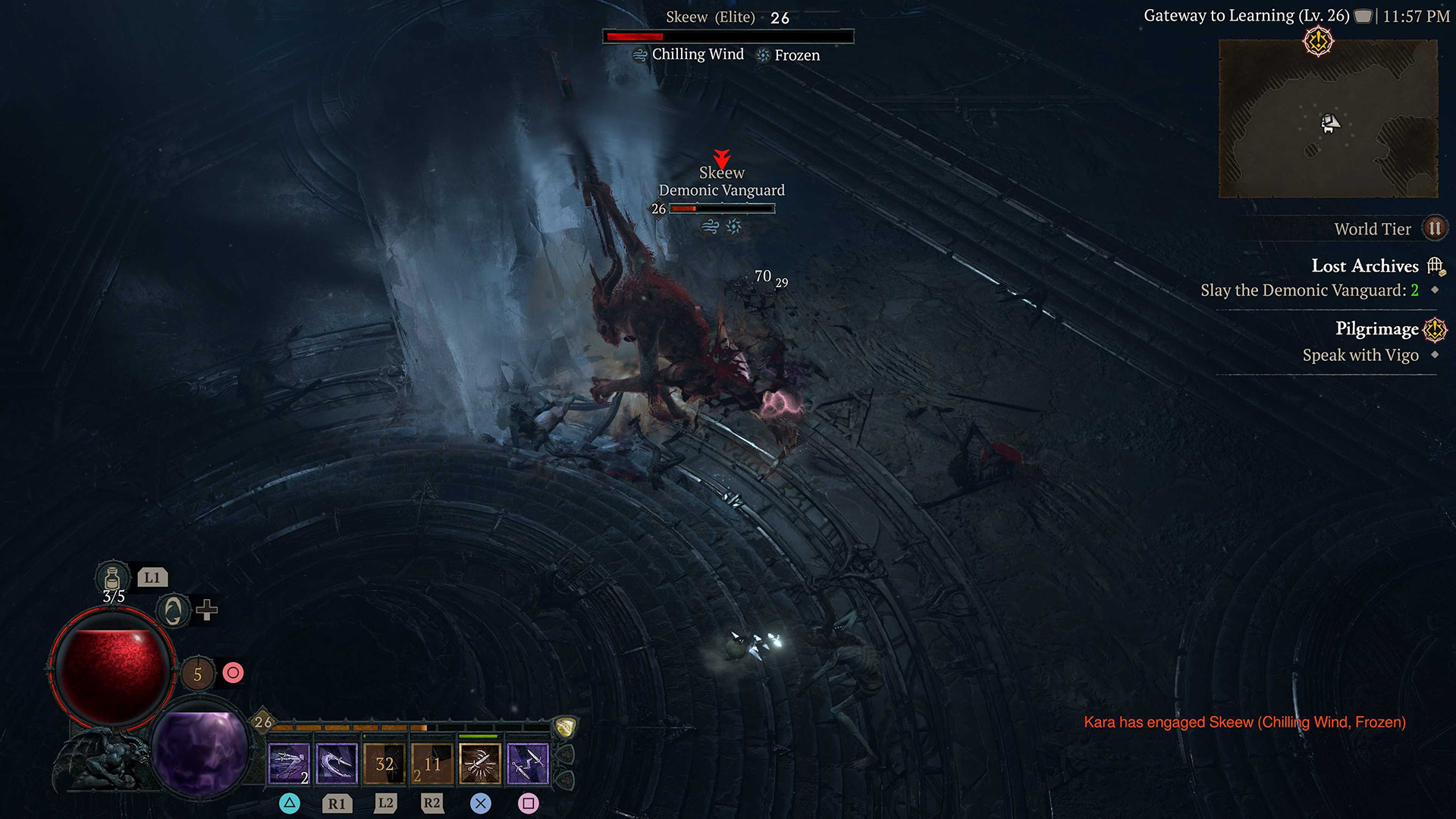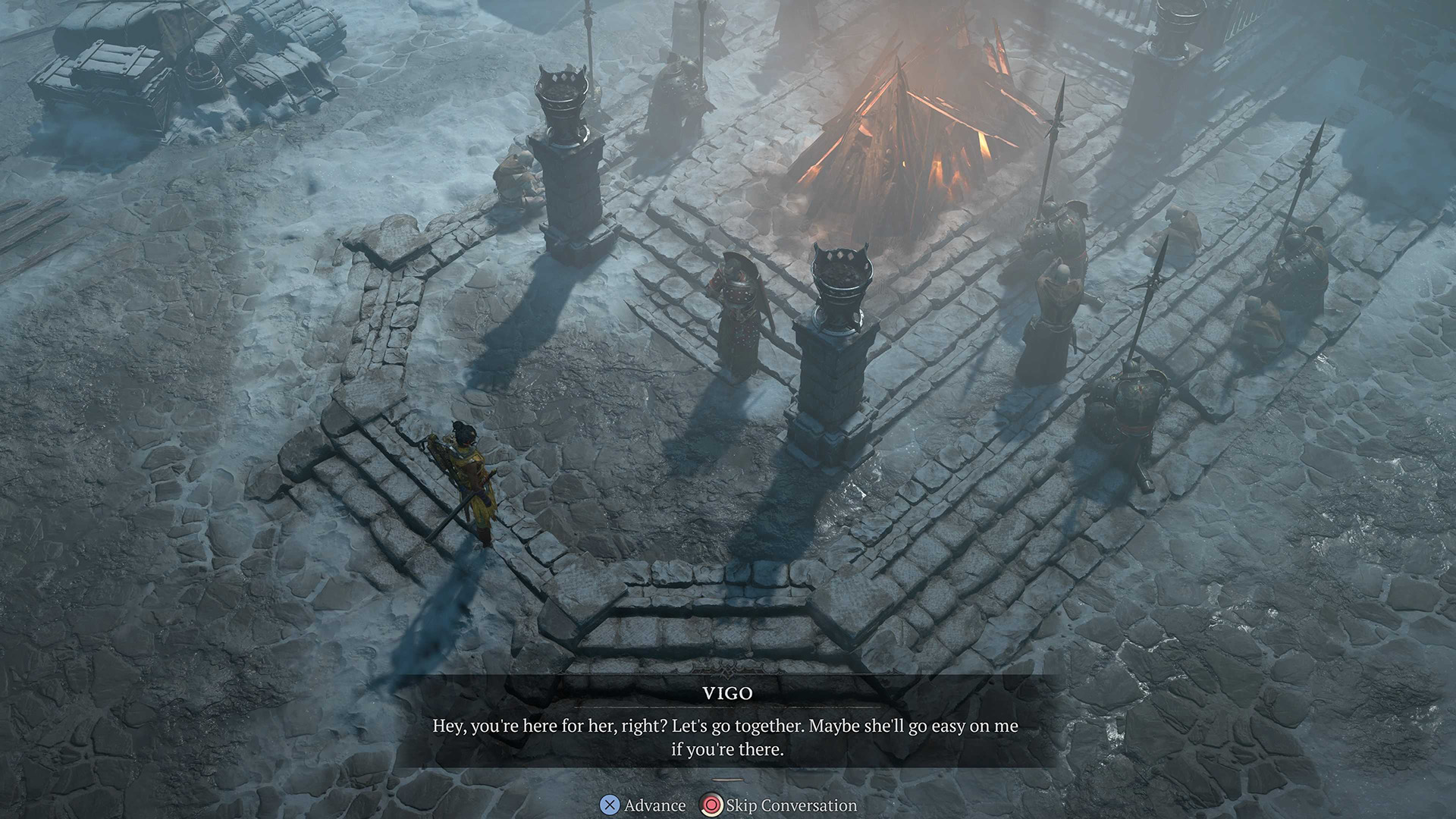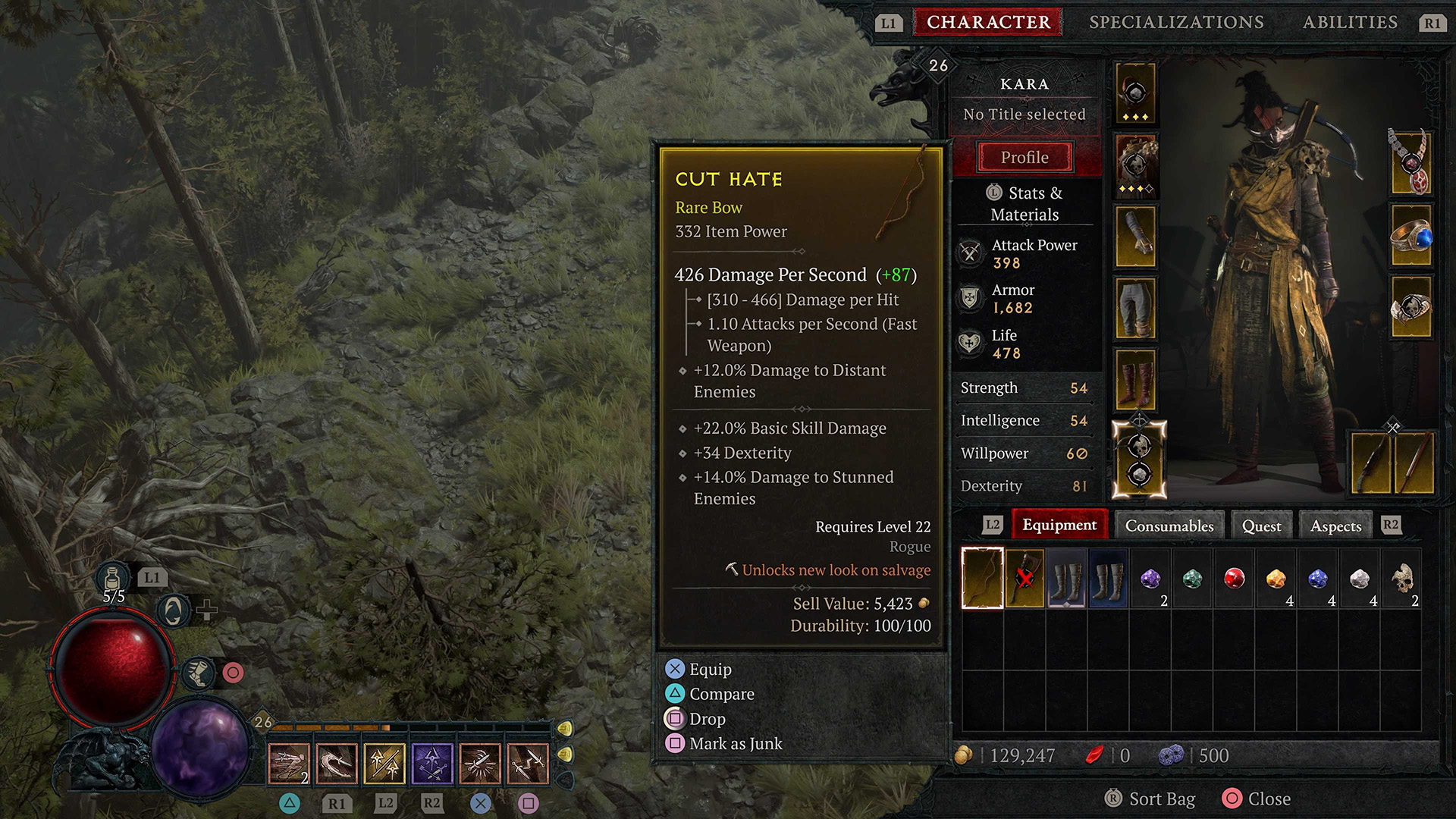
I knew something was happening when I was suddenly added to a group chat with a few friends from high school that I hadn’t spoken to in years. Before I could ask if it was a mistake, the group name changed to “Diablo builds.”
It can be easy to forget the power of major gaming franchises. While some people play dozens of games each year, others stick to one or two releases for an entire generation. A lot of my friends fall into the latter category. If it isn’t NHL or Grand Theft Auto, they don’t have any interest.
Except for Diablo.
There’s something about the carnage of slaying demons in Diablo that goes beyond the barriers of game genre or life stages. It doesn’t matter if we are 14, 34, or 64, when a new Diablo launches, everyone will grab a copy and begin preparing for launch day.
Brutal, dark, and unforgiving
After the mixed reception of Diablo III, the team at Blizzard re-evaluated what players wanted from the franchise. From the earliest reveal, they promised a darker tone, more visceral combat, and a satisfying endgame. And the D4 delivers exactly that.
Loading into the game for the first time, you’re greeted with the harsh winter of Fractured Peaks. The eyes of wolves glint through the trees, ready to pounce on unsuspecting travellers. The wolves are the least of your concerns though. Mere minutes into the game, you’re asked to help a small village deal with demons in the nearby mountains. In no time, you’re back in the action, slaying creatures to level up your character to become the real monster.
You’re slicing through flesh with your axe as the barbarian, carving them to pieces with your dual blades as the rogue, ripping them asunder with your claws as the druid, setting them aflame as the sorcerer, and bringing them back to life as your servant as the necromancer. This is the combat we’ve longed for.
Each press of the button crunches as you make contact with the enemy. From the sound design to the character animations, the developers have done a great job of communicating every moment of the experience. Effects fly across the screen, but remarkably, everything is easy to read, allowing you to follow the action in even the most chaotic moments.
When you clear out the first cave and make your way back to the village, the townsfolk celebrate your return with music and mead aplenty. It isn’t until your vision starts blurring that things take a turn. You wake up in a barn with the townspeople preparing to carve you to pieces.
This is not the cartoonish Diablo of yesteryear. This is brutal, dark, and unforgiving.
Experimenting with builds is half the fun
The action role-playing genre has seen plenty of competition in the past few years. Path of Exile has become a formidable franchise in its own right, targeting the hardcore players with its deep systems and seemingly endless talent trees. Lost Ark has also found an audience by blending ARPG-style combat with an MMO structure to great success. But nothing has quite reached the highs — or the mass appeal — of Diablo.
Diablo has always been able to balance systems with moment-to-moment gameplay in a way that is accessible, yet strategic. And Diablo IV has managed this better than any past entry.
In my time with the game, I’ve played all five classes, maxing out two characters across the beta and stress test, and reaching level 50 with one more in the early access period. Picking a class such as the Rogue or Barbarian that focuses on positioning and combos will feel active at all times, requiring constant, hands-on play. Selecting a class like the Sorcerer or Necromancer relies more on timing and area of effect skills, allowing for a more laid-back style of play. All of the classes feel great to play, though. It doesn’t matter which build you decide on for your character, you’ll feel powerful.

Thanks to the low cost of reassigning your points, you can play around with different builds as many times as you’d like. As a rogue, I played around with a ranged poison build that relied on slowing my opponents and layering on damage with my bow from afar. I also ran a melee build that dealt burst damage by sticking my knives in enemies, dashing to the other side the field, and recalling them to deal damage to entire groups of enemies at once — all while triggering explosions when enemies die for extra splash damage.
Every class has builds that are satisfying to develop, and abilities that feel great to use, resulting in devastating, screen-warping finishers.
That doesn’t mean they are all equally as effective, though.
The co-op experience
While I had a blast experimenting with these different builds on my own, when I was playing with friends, I felt I had to run my best build at all times. When you have a party of four going through a dungeon, if you aren’t at the front of the pack, you can expect to be walking through empty rooms. Somewhere around level 20, you go from slashing enemies into pieces to becoming an unofficial member of Dungeon Wall Decorating Corps. You’ll be painting interiors with corpses as if it’s your day job. My friends aren’t aggressive players, but it can sometimes feel like a race to get the kill given how squishy most mobs are.
Playing in a party is my favourite way to play, but it can be an uneven experience, especially in the early days as Blizzard balances the classes. During the first beta, the necromancer was significantly overpowered, while at launch, they simply weren’t viable. A few days later, all four of the other classes have been nerfed, and the necromancer is once again a class that can keep up with the others.

Blizzard isn’t exactly known for having a light touch when it comes to nerfs and buffs. Just look at Overwatch 2. But to the game’s credit, even if you have one party member sending out giant fire serpents that cover the entire screen, it’s still a blast running through the game together. Fighting world bosses with a dozen characters on screen, talking theorycrafting, and defeating The Butcher for the first time are experiences I’ve missed. It’s the type of game that is equal parts demanding and mindless. It’s perfect for socializing.
Where it currently falls apart is with the local multiplayer.
The local experience
My partner has never played a Diablo game before, so this felt like the perfect time to give it a try. We booted into the game and she created a character, but there was no option to add a second player.
“No problem,” I thought. “You probably need to get to Kyovashad to play co-op.”
So we both did that. There was still no option to play together. Looking into it online, the forums were filled with players with the same issue. We eventually found a workaround that required us to load into her profile during character creation, allowing us to add a second player.
Blizzard has addressed this, saying that this won’t be an issue when the game fully launches, but we’ll have to wait and see whether this is actually the case.

But the problems didn’t stop there. The game was clearly struggling with two players. Our first side quest in the game had us helping a woman to find her husband who had disappeared into the woods in the middle of the night. After we agreed to help her, she joined our party as a follower. Or should I say, followers? She duplicated, and one of her was following each of us.
I’m not going to lie, it was pretty funny. In the oppressive world of Diablo, on a mission that deals with torture and unhealthy masochism, that incident broke the tension in a big way.
While hilarious, other bugs were less amusing. Entire cutscenes played out on a black screen, I warped into the ground several times, and NPCs in the towns would occasionally spin around as if possessed. In this case, unfortunately, there was no demon to exorcise, only bugs to squash. The game also has a serious rubber-banding issue, especially when playing with others online. Hopefully, this will also be addressed in the coming weeks.
Diablo goes back to its roots
Most players probably don’t play Diablo for its story, but for those looking to immerse themselves in the world, D4 offers a surprisingly interesting main campaign. I say surprisingly because the story in the predecessor was, to put it kindly, forgettable. Though there is plenty of filler in the form of fetch quests, the critical path focuses on one of the most interesting characters of the year: Lilith, the daughter of hatred. And to get in front of things, many characters in the game already call her “mother,” so you won’t be the first.

Equal parts revolting and revolutionary, Lilith is a villain with purpose in a world of unquestioning followers. Though clearly committing acts of evil, she had me questioning my allegiances and my actions throughout the game — swaying my mind as another of the masses. While I wouldn’t call the writing in the game subtle, the excellent cinematics, well-written prose, and memorable characters make this one of the stronger grimdark stories in recent years. I found myself genuinely invested in the stories of Neyrelle and Lorath in particular.
The writers on the project kept dialogue to a minimum, while still managing to build a world that is filled with texture. If you’re willing to listen to a few lines of dialogue on occasion, you’ll come to care far more about your mission — and the people affected by it. With that said, all of my friends skipped the story entirely, and they’re still having a great time. Inarius help them.
The loot loop
It wouldn’t be Diablo without loot though, and D4 has it in spades. While the character creator is rather disappointing, it’s hard to fault the devs for not providing more options when you’ll almost never see your character outside of the first cutscene. By the time you reach fifth level, you’ll be decked out in gear from head to toe.
As is tradition, loot comes in the form of common, rare, magic, and legendary items. After playing Last Epoch, I was happy to find that the loot drops in Diablo IV were far less aggressive. That’s not to say loot isn’t plentiful, I just didn’t need to clear out my inventory every few minutes.

Finding a legendary feels as good as ever, and finally pulling the legendary that goes perfectly with your build, peerless. For players looking to just run through the campaign to get to the endgame, there are simplified gear scores available that will give you an idea of how powerful an item is, but for those looking to play efficiently, there are detailed stats across every category imaginable for every piece of loot. And the same gem system from past games has carried over here, allowing you to slot further buffs into your gear.
Finding the balance
Diablo IV delivers the most balanced ARPG to date, giving players more ways to play than ever before. Want lots of lore? Great, dig into the item descriptions and character dialogue. Want the ultimate build for stuns? Wicked, peruse the sprawling ability tree for the perfect combination to ricochet your lightning abilities. But if you just want to slay some foes with friends, the game makes that a blast without needing anything else.
I’ve never been someone who seeks out challenge in PvP modes, but I absolutely love beating my head against a wall at the highest difficulty against a boss. Doing that in hardcore mode is one of the most intense experiences I’ve had in a while. If you’re seeking a challenge, hardcore mode is where it’s at. If you die in the game, you die in real life you lose that character forever. It’s not for everyone, and yes, I did lose a character when I lost connection to the server, but the option is there for people looking for that kind of experience. And that’s what it’s all about: options. Maybe the game should have an offline mode though? Just a thought.
Praise Lilith
I’ve loved my time with Diablo IV so far. Will this be the Diablo people play for the next ten years? I’m not sure. Given Blizzard’s recent record with keeping its promises for live-service games, it’s hard to know how the game will look in a year, let alone ten.
For now, I’m just having a great time catching up with old friends, demolishing demons, and looting for legendaries.
You can play Diablo IV on PC, Xbox, and PlayStation. The game features crossplay, so you can join your friends wherever they play. You can buy the title for the Ps4, PS5 and the Xbox Series X here. For PC, head to BattleNet.
Note: Activision Blizzard, the parent company of Blizzard, has been accused of fostering a toxic work culture for years. The majority of these incidents, which are said to include sexual harassment, unequal pay and retaliation, are alleged to have taken place at Blizzard. While the company has made some settlements regarding these scandals, it’s unclear how much, if anything, has actually changed at the company. Most recently, Activision Blizzard CEO Bobby Kotick addressed the controversies, denying any wrongdoing, instead blaming “an aggressive labour movement” and “mischaracterizations reported in the media.”
MobileSyrup may earn a commission from purchases made via our links, which helps fund the journalism we provide free on our website. These links do not influence our editorial content. Support us here.


